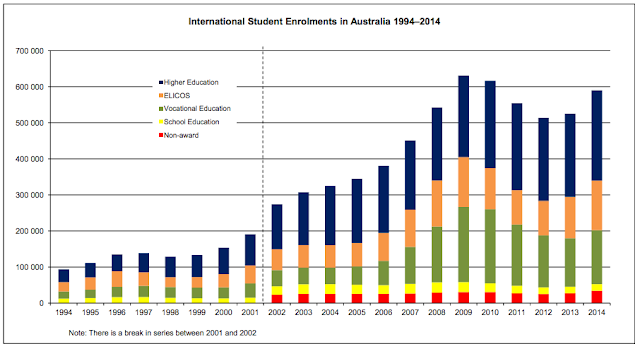Point #1 on my bucket list is to set up my own NGO. It’s
always been a dream of mine and I am positive I will do it someday… but I have
a lot of work to do before getting there. There are so many steps and
considerations that you have to keep in mind. But do not fear! I have done part
of the work for all o you ambitious, visionary, entrepreneurial types out
there.
1.
Find your
passion
You like reading, travelling, coffee and yoga. But what are
you PASSIONATE about? What makes you quiver with excitement? What makes your
heart throb? What will you defend with your life when it comes up at dinner
with your conservative one-track-mind uncles? Not sure yet? You have already
failed.
You can’t base an organisation on something you like. You
won’t be willing to spend sleepless nights and work your heart out – because
that’s what will be necessary – for something you just ‘like’.
Have I not broken your spirit yet? Watch this video and
Professor Larry Smith will blatantly tell you why you will fail.
2.
Work for an NGO before creating one
So you think you’re so cool that you can build your own NGO
without even knowing how one works? Did you ever see a Prime Minister run a
country when they had never even been in politics before? Well let me tell you,
if such a PM has ever existed, then I am pretty
happy I didn’t live in their country when they were in power.
As Verge
Magazine puts it, "as the director of an NGO, you'll need to know how to
balance a budget, how to manage volunteers and how to write funding proposals,
all the while remaining accountable to your board and your donors." You will
probably agree with me when I say that I would much prefer learning about all
of this and make my rookie mistakes when I am not the one accountable for it
all.
3.
Find an idea
You have a passion and you have experience, so you’re on the
right track. I hate to break this to you though, but do you know how many NGOs
are out there? And more precisely, do you know how many NGOs out there are all
working for exactly the same cause? I don’t know and frankly I don’t want to
either because I feel like it would be enough to discourage any entrepreneur.
So how do you break through the masses and win the Nobel Peace Prize? Well, you
have to have one helluva good, original idea.
For example, this is the step where I am stuck at the
moment. I know I am extremely passionate about climate change and sustainable
development... but I am not quite sure what to do about it. It’s great to have
a passion, but your passion has to have a vehicle. And personally, I don’t feel
like rallying, marching and screaming clever slogans will be enough to be
considered a good and original idea.
4.
Find a way to measure results
No matter what you do, no matter how great your idea and
your cause are, you need to find a way of measuring your success. If you can’t weigh
your impact, there is absolutely no way that you will be able to see whether
your hard work is leading to anything.
If you want to found an NGO, it is probably because you want
to bring about change in a certain field. You must be careful not to measure
your success based on how busy you are, how many networking sessions you go to
or how many workshops you facilitate. You want to find a way to measure the
change itself and to keep your organisation’s raison d’être in mind.
5.
Find your pals
You may have come this far with a small group of people driven
by the same passion. If not, then you better go find them quickly. You’re
intelligent, I am sure you can see why you can’t do this alone. There will be
SO MUCH stuff you have to think about, and you would be pretty pretentious to
think you are an expert at all of it (graphic designing, creating a website,
managing finances, developing policies, finding volunteers, finding
beneficiaries, etc., etc., etc.).
That being said, you can’t just pick any old friend that’s
just looking to get out of their job in a café. It is crucial for you to find
trustworthy partners that are equally passionate about your cause. You will
have so much on your plate that you can’t afford to deal with, a partner who
questions all of your decisions (although you have to be able to take
constructive criticism) or worry about a partner who is not doing a good job
whereas they are meant to be helping you.
6.
Plant a money tree
I’m kidding, they don’t exist.
If a NFP is what you decide to go for, you’re probably
expecting for money to be a little tight. I mean NFP does stand for
NOT-for-PROFIT, so it’s not like you’ll have much financial leeway to work
with. And when miracle! you do come into money, there will probably be
discouraging amounts of paperwork to deal and there might be some strings
attached as well.
Matador
Network raises an interesting argument when it comes to funding: ‘The
quality of the work a NGO does and the amount of its funding are often
inversely related. That is to say, the NGOs with less money do better work per
hour and dollar spent. The crucial point
is to minimise your NGO’s need for money.’
I can already hear you saying ‘yeah but I need SOME money to
live’. Fair point my friend, and here are three easy ways to fill your coffers:
3.
Team up with a larger NFP or charity that can
receive tax deductable donations on your behalf. They can then use that money to
give your organisation a hand.
7. Build a network
Vicky Ferguson, director of Glad’s House in Mombasa, Kenya explains
to The
Guardian that ‘when you are starting out, you may be afraid to approach the
‘big boys’ but collaboration is crucial’.
As we said in #5 you just can’t be extremely knowledgeable
in everything. Through your organisation, you will be tackling complex issues
that will need expert solutions. NGO/NFP does not only mean volunteerism and
fundraising. You are going to need a professional backbone if you want any
credibility, and this will come by seeking advice from the big players that are
already established in the space you are entering. Don’t see them as
competitors but rather as mentors that you can look up to for guidance.
As you
grow, you’ll be relieved to have a solid network of professional acquaintances
that you can turn to for counselling.
Remember, bigger organisations have started where you are. You can
look at what they have done to see what has worked and what has failed and
ultimately learn from their mistakes.

Although
Alexandra didn’t know much about conference production before first coming
across this opportunity with Akolade, she has quickly become assionate about
her job. Gaining in-depth knowledge in a variety of new fields without
going through exam stress? Who could ask for more? If ever you speak to
Alexandra and wonder what that funny accent is, it is from Quebec,
French-speaking Canada. Do not hesitate to ask Alexandra about her former life
on the 47th parallel; she will be thrilled to talk to you about snow
storms, skiing and -35⁰c!




















